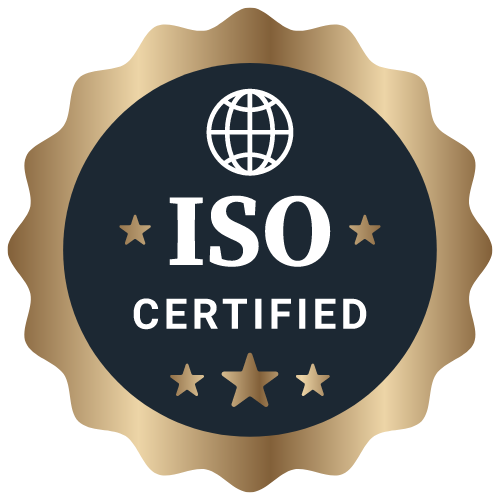ISO Certification Myths: Debunking Common Misconceptions
Learn the truth about common myths surrounding ISO certification. This article debunks misconceptions about the process, requirements, and benefits of obtaining ISO certification.
ISO Certification Myths: Debunking Common Misconceptions
ISO certification is a globally recognized standard that demonstrates a company's commitment to quality, efficiency, and customer satisfaction. Despite its many benefits, there are several myths and misconceptions surrounding ISO certification that can deter organizations from pursuing this valuable accreditation. In this article, we will debunk common myths about ISO certification and shed light on the truth behind the process, requirements, and benefits of obtaining ISO certification.
Myth #1: ISO certification is only for large corporations
One of the most common misconceptions about ISO certification is that it is only suitable for large corporations with extensive resources. In reality, ISO certification is applicable to organizations of all sizes, including small and medium-sized enterprises. The ISO standards are designed to be flexible and scalable, allowing companies of any size and industry to implement them effectively.
Myth #2: ISO certification is too expensive
While there are costs associated with obtaining ISO certification, the long-term benefits outweigh the initial investment. In fact, many organizations find that the improved efficiency, reduced waste, and increased customer satisfaction that result from ISO certification lead to significant cost savings in the long run. Additionally, some ISO certification bodies offer affordable packages and payment plans to help make the certification process more accessible to businesses of all sizes.
Myth #3: ISO certification is a one-time process
Another common misconception about ISO certification is that it is a one-time process that does not require ongoing maintenance. In reality, ISO certification is a continuous improvement process that involves regular audits, reviews, and updates to ensure that the organization continues to meet the ISO standards. By maintaining ISO certification, companies can demonstrate their commitment to quality and continuous improvement to customers, suppliers, and other stakeholders.
Myth #4: ISO certification is too complicated
While the process of obtaining ISO certification may seem daunting at first, it is not as complicated as many organizations believe. With the help of a knowledgeable consultant or internal quality management team, companies can navigate the ISO certification process with relative ease. Many ISO certification bodies also provide resources, training, and support to help organizations implement the ISO standards effectively and efficiently.
Myth #5: ISO certification is only about paperwork
One of the most persistent myths about ISO certification is that it is only about generating paperwork and documentation. While documentation is an important aspect of ISO certification, it is not the only requirement. The ISO standards also emphasize process improvement, risk management, and customer satisfaction, all of which are essential components of a successful ISO management system.
Myth #6: ISO certification guarantees quality
While ISO certification is a valuable tool for improving quality and efficiency, it does not guarantee that a company's products or services are of high quality. ISO certification is a framework that helps organizations establish and maintain effective quality management systems, but it is ultimately up to the organization to ensure that these systems are implemented and followed consistently. ISO certification is a tool for continuous improvement, not a guarantee of quality.
Benefits of ISO Certification
Now that we have debunked some common myths about ISO certification, let's explore the benefits of obtaining ISO certification:
Improved Efficiency
ISO certification helps organizations streamline their processes, reduce waste, and increase overall efficiency. By following the ISO standards, companies can identify areas for improvement and implement best practices to optimize their operations.
Enhanced Credibility
ISO certification is a mark of credibility that demonstrates a company's commitment to quality, customer satisfaction, and continuous improvement. ISO-certified companies are often perceived as more reliable and trustworthy by customers, suppliers, and other stakeholders.
Increased Customer Satisfaction
ISO certification requires organizations to focus on customer satisfaction and continually strive to meet customer needs and expectations. By implementing ISO standards, companies can improve the quality of their products and services, leading to higher levels of customer satisfaction and loyalty.
Global Recognition
ISO certification is recognized worldwide and can open up new markets and business opportunities for organizations. ISO-certified companies are more likely to be preferred suppliers for international customers who require assurance of quality and reliability.
Risk Management
ISO certification helps organizations identify and mitigate risks that could impact their operations, finances, or reputation. By implementing a robust risk management system in accordance with ISO standards, companies can proactively address potential threats and avoid costly disruptions.
ISO certification is a valuable tool for organizations seeking to improve quality, efficiency, and customer satisfaction. By debunking common myths and misconceptions about ISO certification, we can help businesses understand the true benefits and requirements of obtaining ISO certification. By implementing ISO standards effectively, companies can enhance their credibility, competitiveness, and long-term success in today's global marketplace.
Latest Updates
ca4filings.com Services




























-registration.png)



